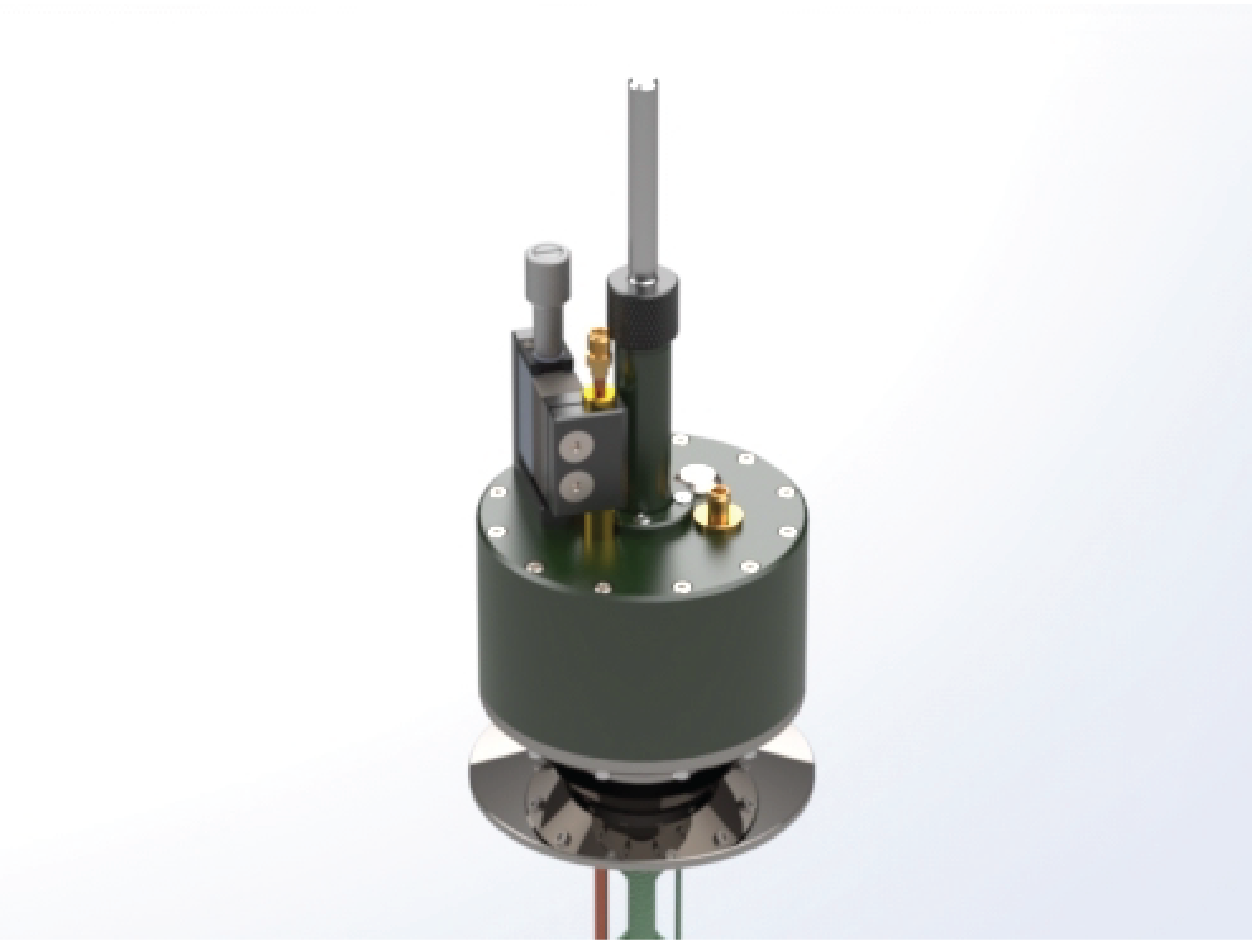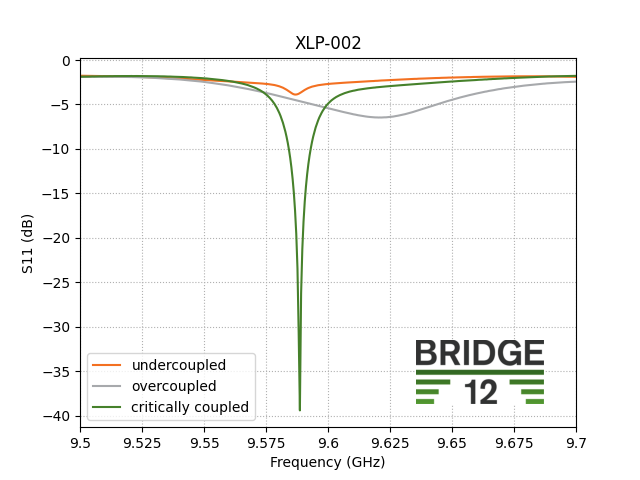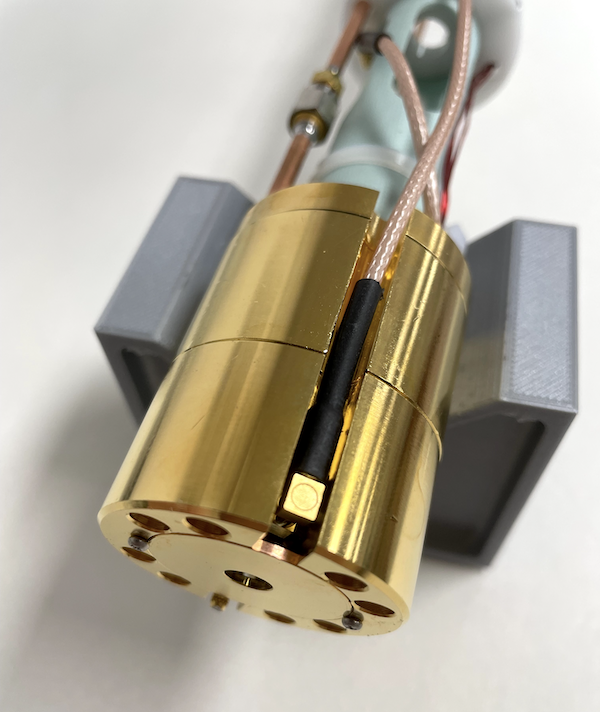
Bridge12 X-Band LGR
The Bridge12 XLP resonator (XLP) is optimized for pulsed X-band EPR spectroscopy. The resonator can be operated from 2 K to room-temperature and is compatible with standard cryostats such as the Oxford Instruments CF935 or the Cryogen Ltd. Cryogen-Free Cryostat. The resonator is connected to the spectrometer using a standard SMA connection. The microwave coupling is adjusted using a micrometer screw, located at the top of the probe.

Microwave Coupling
The Bridge12 XLP has a simple coupling mechanism to adjust the resonator coupling from undercoupled to critically coupled, to overcoupled. Depending on the desired Q, the B1e field will change and a conversion factor from > 1 G/√W (overcoupled) to > 3.5 G/√W (critically coupled) can be achieved. The resonator accepts sample tubes with an outer diameter of < 4 mm diameter. The sample is mounted on a sample stick for easy inserting of the sample at any operating temperature. To accurately monitor the sample temperature, the probe is equipped with a temperature sensor located close go the cavity.

A Versatile Resonator
The Bridge12 XLP is a truly versatile resonator. It can be equipped with an RF coil for either ENDOR or DNP spectroscopy. The RF tuning is done completely remotely. For DNP spectroscopy the RF circuit can be tuned to a single frequency for maximum sensitivity. For ENDOR spectroscopy a broadband circuit can be attached to allow frequency sweeps of the RF pulse. Optionally, the RF circuit can be installed and removed by the user.
Technical Specifications
- Resonator Frequency (empty): 9.6 GHz
- Resonator Frequency (with sample): 9.5 GHz
- Conversion Factor (high Q): > 3.5 G/√W
- Loaded Q (empty): 700
- Bandwidth (high Q): 15 MHz
- Conversion Factor (low Q): > 1.5 G/√W
- Loaded Q (empty): < 100
- Bandwidth (low Q): > 100 MHz
- Maximum Sample OD: 4 mm (EPR), 3 mm (ENDOR/DNP)
- Typical Sample Height: 10.0 mm
- Operating Temperature Range: 2 K to RT
- Sample exchange at all temperatures
- Integrated temperature sensor for accurate determination of the sample temperature
- Compatible with Oxford Instruments cryostat model CF935
- Probe leak checked
- Optical access perpendicular to the resonator or through sample stick